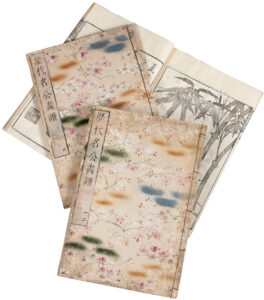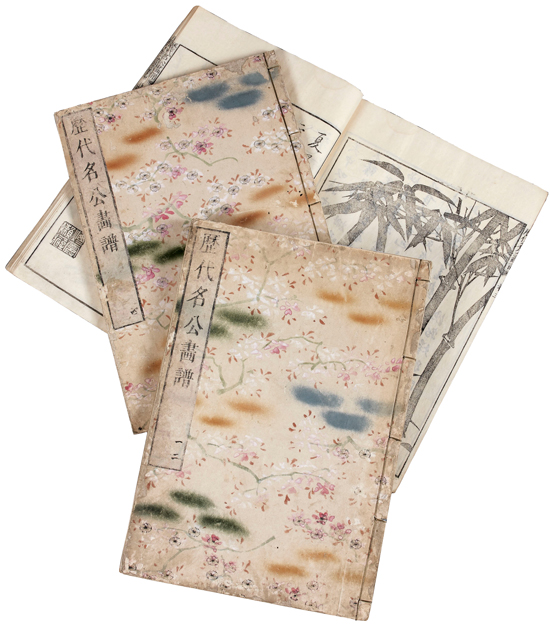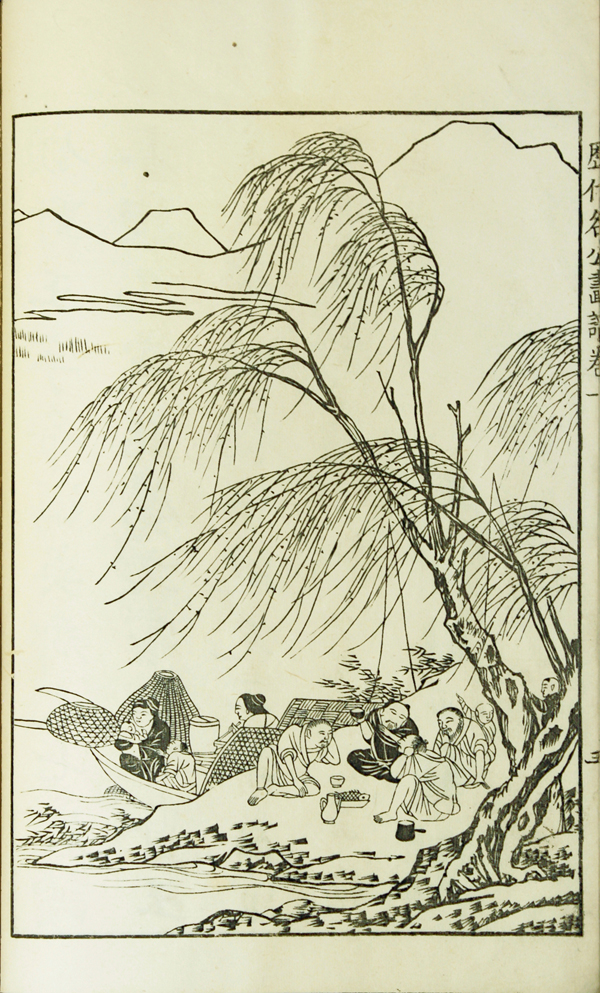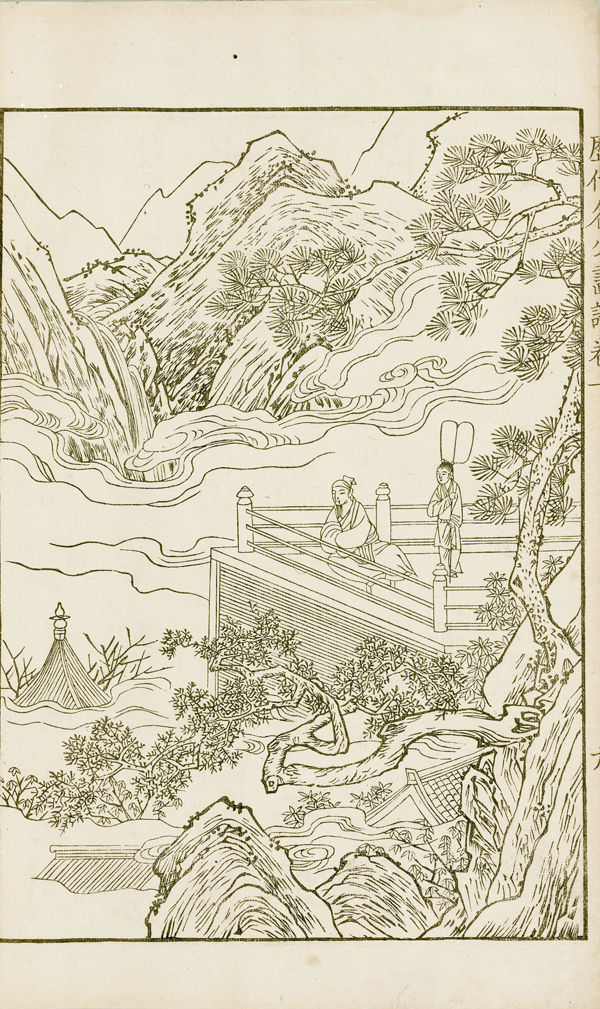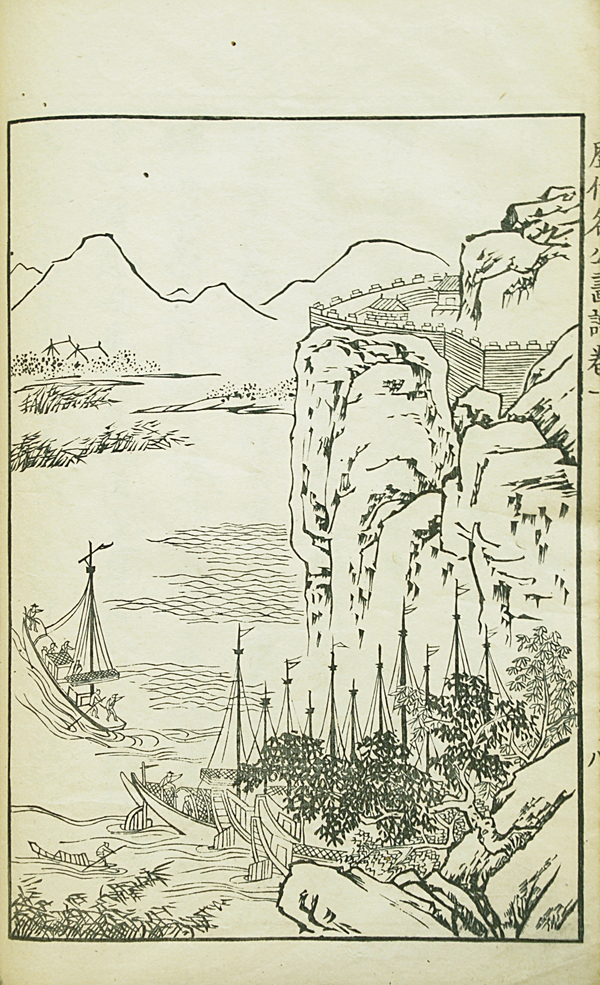[Anthology of Chinese painting]. [Master Gu Bing].Tani Buncho. Rekidai Meiko Gafu (= Record of the paintings by renowned artists of past Dynasties.) Kansei 10 (1798).
4 parts bound in 3 volumes small folio [320 x 216 mm] printed on rice or mulberry paper. 50 woodcuts in the first volume (18 for the first part and 32 for the second), 30 in the second volume and 28 in the last one, that is to say a total of 108 full-page engravings. Red stamp from a former owner at the beginning of the first volume. Preserved in the original wrappers with a floral pattern sewed in the Chinese manner, with lettering piece on the front cover. Modern protective case in blue cloth. Contemporary binding.
Rare first Japanese edition of the first illustrated history of Chinese painting, covering the long period extending from the Jin Dynasty (317-420) to the Ming Dynasty (1368-1644).
The author of this collection is Master Gu Bing (active between 1594 and 1603), artist from Hangzhou. Pupil of Zhou Zhimian, Gu Bing excels in the painting of landscapes, flowers and birds. In order to introduce the art of his predecessors and contemporaries, he published in 1603 a collection containing 106 works by famous artists from various dynasties. By doing so, he reduced with meticulous care their size but still kept their grace. His text explains the six principles of his writing as well as his selection criteria. The works show all sorts of paintings: landscapes, characters, flowers, birds, etc. Each work comes with a very finely handwritten presentation on the recto, so the selected artists would be better known. For the European reader, it seems surprising that some paintings illustrated in this book and executed more than a thousand years ago can still be visible nowadays in Chinese museums.
This first Japanese edition faithfully reproduces the woodcuts executed by MAster Gu Bing for the first edition published in China in 1603.
The present edition was published by Tani Buncho (1763-1841), one of the most famous painters in Japan at the beginning of the 19th century.
Each Chinese artist is represented by only one illustration. The first part contains the works of 18 artists from the Jin Dynasty (317-420), until the period of the Five Dynasties (907-960). The second part illustrates the paintings of 32 artists from the Song Dynasty (960-1279). The third volume reproduces the works of 15 artists from the Yuan Dynasty (1279-1368) and 15 artists from the beginning of the Ming Dynasty (1368-1644). Finally, the fourth volume illustrates 28 paintings from the second half of the Ming Dynasty. According to the tradition, the second illustration of the second volume, representing a melon, plants and a locust, is the work of the Emperor Gaozong, who reigned from 1127 to 1162. Only one work by a woman painter is represented among all the masters; the name of the artist is Guan Daosheng (1262-1319). It is the second illustration of the third volume.
A very beautiful and very pure copy of this rare work preserved in its wonderful original painted wrappers highly decorative.
References: Philip K. Hu, Visible Traces, Exhibition Catalogue, Rare Books and Special Collections from the National Library of China, N.Y.C., Queens Borough Library and National Library of China, Beijing, 2000, n°8 (for the first Chinese edition).
See less information
